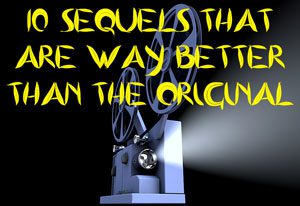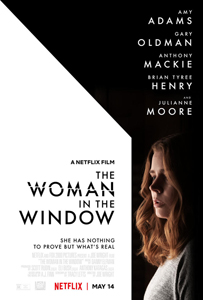“The Woman in the Window” (Netflix) calls to mind Hitchcock’s “Rear Window” as Amy Adams’ Anna – an agoraphobic if you want to be nice; a drunken, pill-popping, shut-in cat lady otherwise – keeps hearing bumps and screams in her Manhattan neighborhood. With a stellar cast, the film is always mildly engaging.
But as it drifts from a portrait of an illness to a mood piece, then navigates mid-film twists before ending up as a horror flick, it’s never what it could’ve been.
Braced for twists
Anna is the POV character in this film written by actor Tracy Letts (working from A.J. Finn’s 2018 novel) and directed by Joe Wright. If “The Sixth Sense” surprised us all at the end, “Woman” is the opposite: We’re immediately aware that twists will be coming, and they will likely address whether Anna is a reliable narrator or not.
“The Woman in the Window” (2021)
Director: Joe Wright
Writers: Tracy Letts (screenplay), A.J. Finn (novel)
Stars: Amy Adams, Gary Oldman, Julianne Moore
Anna, herself a therapist, is undergoing counseling (from a doc played by Letts) for her agoraphobia. But the Russells, who move into the brownstone across the street, have issues of their own (unless Anna is completely full of crap and Keyser Soze-ing us for some reason).
Teen Ethan (Fred Hechinger) has a nice but awkward meeting with Anna, then another weird but upbeat visit comes from mom Jane (Julianne Moore). Dad Alistair (Gary Oldman, showing his usual “Oh, that’s Gary Oldman!” chameleon skills) is not so friendly.
David (Wyatt Russell) is a wild card: a downstairs tenant with a secret (which might be “How can he afford any place in Manhattan as a musician and part-time handyman?”). Brian Tyree Henry and Jennifer Jason Leigh ably cash checks, and Anthony Mackie pops in for some reason.
Anna’s house is also a decent character, with its basement apartment and upstairs skylight and the way Anna keeps it dim enough that Saul Goodman’s brother would feel at home.
More promise than payoff
None of the early (supposed?) events – such as the suggestion that Alistair is beating his son – are original. But Wright and Letts let our familiarity with this type of story allow us to think something deeper is coming – and honestly, that’s not a bad play in terms of keeping things watchable. Also, a simple conversation featuring actors the caliber of Adams and Moore has built-in mileage.
But “The Woman in the Window” never really got under my skin. It doesn’t phone it in, and it’s never outright bad, but it doesn’t reach a next level of suspense or creepiness or bizarre possibilities, even with a series of twists that you may or may not see coming. It’s ultimately a thriller for the “safe space” era.

Partial pandemic parallel
Also, it fails to tie agoraphobia into a wider statement about how we’ve all become shut-ins (to a greater degree than before) during the pandemic. Maybe this past year will allow viewers to more easily sympathize with Anna. But as the film was completed well before the pandemic, this is accidental.
The notion of neighbors visiting each other seems out of time, even if that time is pre-pandemic 2019. That’s not a bad thing, especially since the film is trying to be surreal – or make you think it’s surreal – and it couldn’t shake its ties to old-school moviemaking if it wanted to. (It doesn’t want to. Anna constantly watches old movies.) But it’s as weightless as it is out-of-time.
Like when Anna escapes into a wine-and-pills stupor, “The Woman in the Window” is fleeting. It doesn’t leave you with a lingering feeling other than that you’ve watched – and soon forgotten – a middling suspenser.

